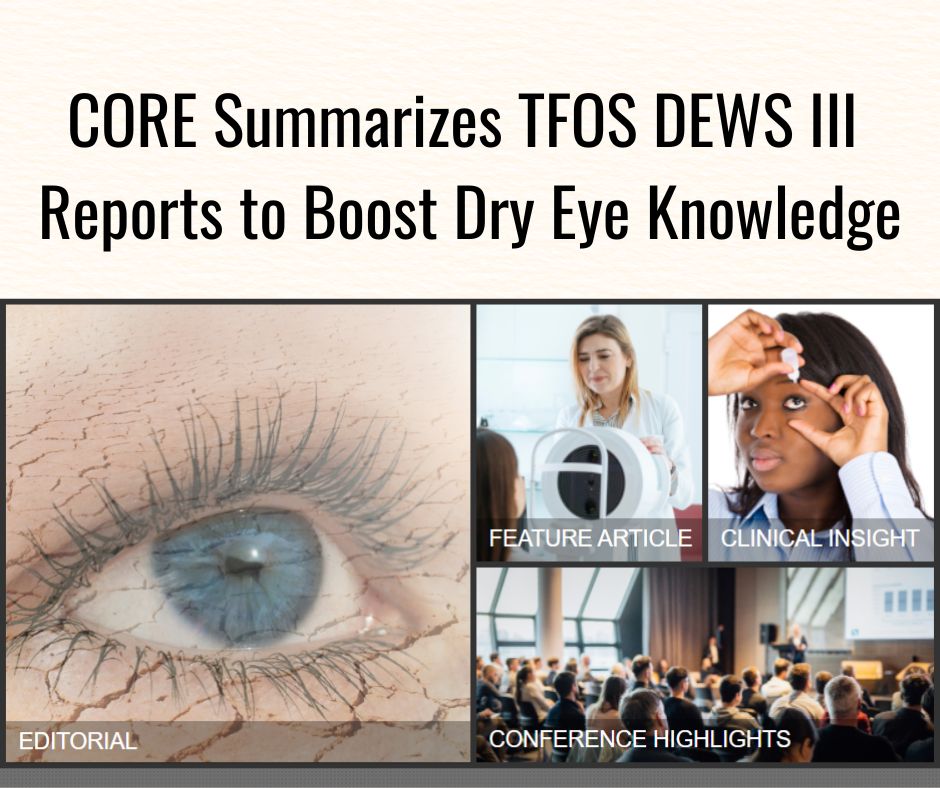IMC 2024 News: Multiple Studies Reinforce SightGlass Vision Diffusion Optics Technology™ Efficacy for Myopia Management
_(13).jpg)
Multiple studies presented this week at the 2024 International Myopia Conference (IMC) in China significantly reinforce the performance of SightGlass Vision’s Diffusion Optics Technology™ (DOT 0.2) spectacle lenses in slowing myopia progression in children1. The studies affirm positive performance in clinical and real-world settings, demonstrating excellent safety and efficacy, and the lack of a rebound effect.
“The range and depth of evidence being shared at IMC—nine works on contrast theory and DOT lenses as well as an invited guest lecture on contrast theory—should further expand confidence in DOT spectacle lenses, our innovative approach to myopia control,”1,2 said Andrew Sedgwick, CEO of SightGlass Vision.
CHINA and U.S. BASED Clinical Trials
With IMC taking place in Hainan, of particular interest is the six-month data reporting from the CATHAY trial—a two-year, randomized, controlled study across five hospitals in China. Control of Myopia Using Diffusion Optics Technology (DOT) Spectacle Lenses in a Chinese Population: 6-Month Results (Chen Z, et al.) evaluates 186 participants after six months of wear, demonstrating that DOT lenses substantially slows myopia progression as evidenced by minimal change in axial length (AL) and cycloplegic refractive error compared to control group.1
A related analysis—Initial Axial Length Response to Diffusion Optics Technology (DOT) Spectacle Lens Wear (Laughton D, et al.)—shows that AL elongation is halted in almost half of the DOT lens group after six months of wear.3
Following completion of the four-year CYPRESS clinical study in the United States, 54 children were enrolled to assess if the treatment benefit was retained after discontinuing DOT lens wear. Myopia Progression After Cessation of Diffusion Optics Technology (DOT) Spectacle Lenses (Hill J, et al.) presents six-month interim results from the study, suggesting that neither refractive error nor AL increases are faster after DOT lens discontinuation compared to the control2.
“Patterns of Ocular Growth in Young Children Wearing Diffusion Optics Technology (DOT) Spectacle Lenses: A 3-Year Longitudinal Study” shares the particularly positive outcomes for six- and seven-year-old patients in the CYPRESS clinical trial4.
Real World Efficacy in China and Canada CLINICAL SETTINGS
During IMC, SightGlass is making public two real world studies that further validate clinical trial results, using data from patients in China and Canada.
Real-World Effectiveness of Diffusion Optics Technology (DOT) Spectacle Lenses for Myopia Control in Chinese Children (Wang L, McParland M) reviews clinical records from 147 DOT lens patient records. Results show that changes in both refractive error and axial length at six and 12 months from baseline are not significant.5
One-Year Myopia Control Performance of Contrast Modulation Spectacle Lenses Compared to Defocus-Based Spectacle Lenses in a Canadian Practice (Ho K, et al.) analyzes the efficacy of DOT spectacle lenses and peripheral defocus spectacle lenses in 80 Asian-Canadian children ages six to eight at treatment initiation. The study indicates that DOT lenses are more effective in slowing myopia progression (45% better as measured by mSER) compared to the other myopia control lens.6
FOUNDATIONAL RESEARCH
SightGlass Vision’s commitment to building scientific understanding surrounding myopia control will also be evident at the IMC, including posters on Subfoveal Choroidal Thickness Changes After 1-Week of Myopia Control Spectacle Lens Wear (Desiato A, et al.), Contrast Sensitivity Function Differentiates Between Myopia Control Spectacle Lens Designs with Glare and Luminance Manipulations (Wolffsohn J, et al.) and Why Does Near Work Cause Myopia and How Might We Intervene Optically? (Langan R).
Myopia innovator, researcher, and University of Washington Professor Jay Neitz, PhD, has been invited to present on Contrast Theory and its Implications for Novel Myopia Interventions.
SightGlass Vision’s patent-protected technology has made its commercial debut in several markets, including China, the Netherlands, and Israel, as well as through preliminary market trials in other countries. The company operates as a joint venture of CooperCompanies and EssilorLuxottica. For more information, visit SightGlassVision.com.

3.jpg)
5.jpg)
4.jpg)
2.jpg)

3.jpg)


1.jpg)



.jpg)
.jpg)



_(Instagram_Post).jpg)
.jpg)
_(1080_x_1080_px).jpg)


with_UP_Cabinet_Minister_Sh_Nand_Gopal_Gupta_at_OpticsFair_demonstrating_Refraction.jpg)
with_UP_Cabinet_Minister_Sh_Nand_Gopal_Gupta_at_OpticsFair_demonstrating_Refraction_(1).jpg)

.jpg)








.jpg)



.png)




